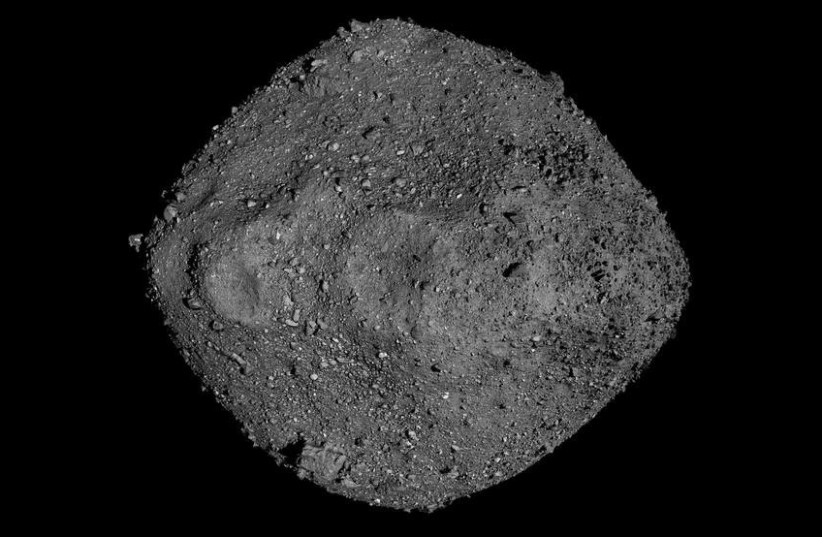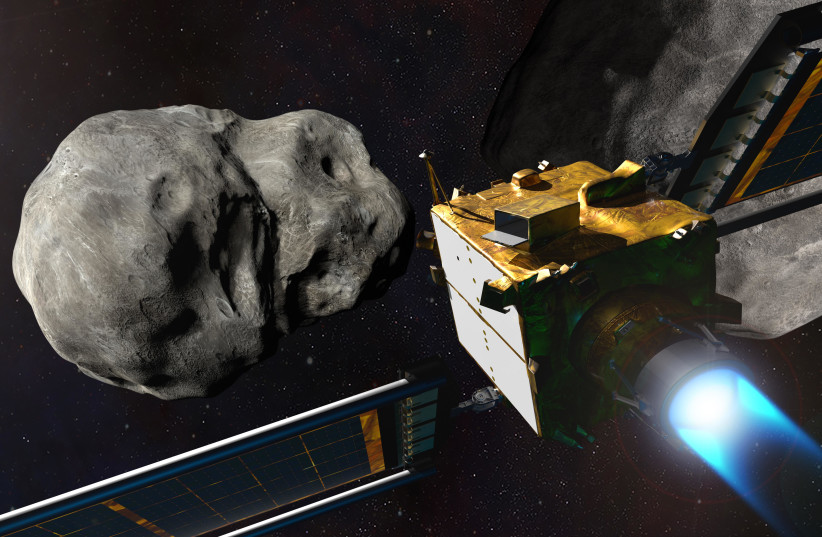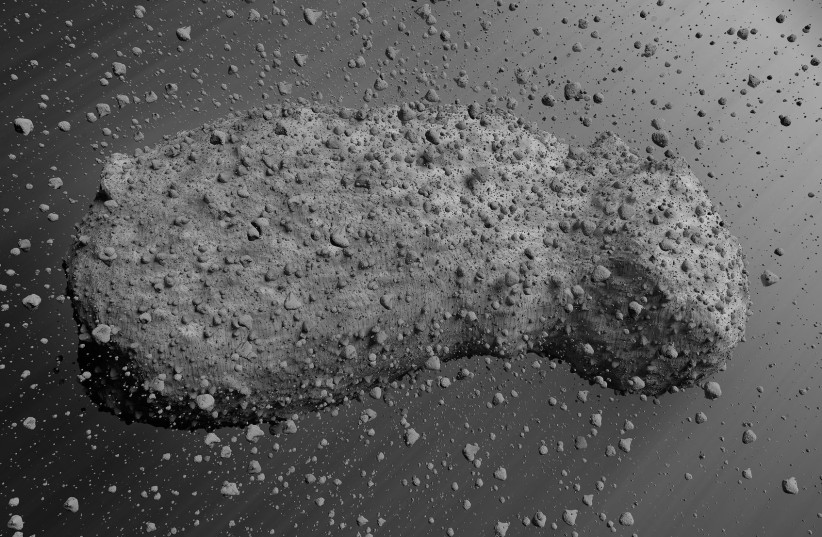An asteroid around the size of 100 Academy Award statuettes – also known as Oscars – is flying toward Earth and will pass by at a considerably close distance on Wednesday, according to NASA's asteroid tracker.
The asteroid in question has been designated 2023 BL1 and is just one of five different asteroids set to pass the Earth on Wednesday, according to the Center for Near-Earth Object Studies (CNEOS) at NASA's Jet Propulsion Laboratory (JPL).
Notably, all five asteroids were only recently discovered this month and are part of the first batch of new asteroids identified and designated in 2023.
How big is the asteroid coming toward Earth in 2023?
And the Academy Award for the biggest asteroid goes to...not this one, that's for sure. According to NASA, asteroid 2023 BL1 has an estimated maximum possible diameter of 34 meters.
To put that in perspective, the Oscar statuettes given out at the prestigious Academy Awards are each just a little over 34 centimeters (a total length of 13-and-a-half inches, for American readers). Since there are 100 centimeters in a meter, this would mean that there would be 100 Oscar award statues to fit the maximum diameter of this asteroid.

Now, the gold Oscar statuettes (actually solid bronze with gold plating on a black metal base) weigh 3.85 kilograms (Eight-and-a-half pounds). This means that 100 of these statuettes stacked on top of each other would combine with the full weight of 385 kilograms – such is the weight of what must be an incredibly distinguished and successful career in cinema to have amassed 100 Oscars.
Now, that's a lot of weight to be sure, but it is safe to say that asteroid 2023 BL1 is likely heavier, though admittedly we don't know the exact mass.
But while Oscar statuettes have height and mass, they don't have speed. This asteroid, however, does, with NASA estimating it barreling towards the Earth at a speed of 14.66 kilometers per second, or 52,776 kilometers per hour. That speed is absolutely mindboggling and is nearly 43 times the speed of sound.
Alas, as some Oscar winners find out the hard way, fame can be fleeting, and that may very well also be true of asteroid 2023 BL1. Out of all the asteroids coming Wednesday, asteroid 2023 BL1 isn't the biggest or even the fastest.
Rather, that would both go to asteroid 2023 AQ1, an asteroid with an estimated diameter ranging between 41 meters and 91 meters, streaking towards Earth's orbit at a speed of around 15.71 kilometers per second, or 56,556 kilometers per hour.
However, it will have the closest approach.
Will an asteroid hit the Earth in 2023?
Though the 2023 Oscars nominees are here, many still recall the picks from last year, including the critically acclaimed Best Picture nominee, Don't Look Up, starring Leonardo DiCaprio. That film depicted the lead-up to an apocalyptic asteroid impact on the Earth and helped reaffirm this classic doomsday scenario in the public zeitgeist.
But looking up will be fine here because asteroid 2023 BL1 isn't going to hit, even if it does come surprisingly close.
Most Near Earth Objects (NEOs) that are reported as passing close to the Earth actually pass by at well over a million kilometers away. In other words, it may be a "close approach" the same way many Oscar-bait movies are "based on a true story" – that is to say, loosely.
There is a reason for this though. While on a practical level, it is considerably far, 1-2 million kilometers can still be considered very close on a cosmic scale of things.
That being said, the Moon tends to orbit the Earth at an average distance of 384,000 kilometers, so generally speaking, anything that passes by farther than that is usually not much to write home about.
However, that isn't the case with asteroid 2023 BL1, which will actually pass by the Earth at a distance of just under 224,397 kilometers – which is indeed closer to the Earth than the Moon.
Now there are still other markers in space that are closer like satellites and the International Space Station. However, this closeness is still something a bit different from the norm – in fact, NASA CNEOS even gave this particular asteroid 2023 BL1 flyby a rarity of 1, unlike the typical rarity of 0, to signify this.
But even if the asteroid did impact the Earth, it wouldn't do much.
Consider the following. Israel's Davidson Institute of Science, the educational arm of Weizmann Institute of Science, determined the impact of an asteroid 140 meters in diameter or more would release an amount of energy at least a thousand times greater than the first nuclear bombs.
Larger asteroids over 300 meters wide – like the Apophis asteroid – could destroy an entire continent and asteroids over a kilometer in width – like asteroid 138971 (2001 CB21), which passed the Earth in March 2022 – would be a global catastrophe.
But an asteroid like 2023 BL1 is just too small. If it doesn't burn up in the atmosphere, it would explode in a massive airburst that, while very loud, likely wouldn't cause any actual danger.
Consider some other recent asteroid impacts as an example.
Back in March 2022, a small asteroid around half the size of a giraffe known as 2022 EB5 hit the Earth just hours after its discovery. But given how small it was, it didn't exactly result in any damage.
More recently, in late November 2022, tiny asteroid 2022 WJ1 harmlessly exploded into fragments that scattered around Lake Ontario. NASA had predicted that this small meter-long asteroid would impact this location and knew there wouldn't be any harm from it.
To put it in perspective, you are more likely to be hit by 100 Academy Award statuettes than this asteroid – and considering how heavy 385 kilograms is, it would be very dangerous and possibly fatal.
Even Will Smith hit harder at the 2022 Academy Awards than this asteroid will hit the Earth – though Chris Rock was the only one injured that time.
When is the next asteroid predicted to hit the Earth?
Don't look up yet because it won't be for a very, very long time, at least in terms of apocalyptic-level collisions.
NASA has checked the numbers. According to them, Earth is safe from any catastrophic asteroid impacts for the next century, meaning no asteroid-induced Armageddon is on its way.

Which asteroid could potentially hit Earth?
At this moment, scientists don't know for sure. However, there are a few candidates for the most dangerous asteroid our planet could encounter.
One of the most dangerous asteroids at the time of writing is the 500-meter-wide asteroid Bennu, which has an orbit that can cross with Earth's own.
If this asteroid impacted the Earth, the result would be catastrophic – but as far as NASA is aware, this won't be for a long time, if ever. Of course, there are still other possibilities, such as an asteroid coming from the direction of the Sun as opposed to the ones coming towards the Sun – those are the ones scientists struggle to catch sight of since the Sun's glare gets in the way. But we're working on finding a way to watch out for those, too.

Do we have any way to stop an asteroid from hitting the Earth?
We just might, thanks to the hard work of scientists around the world. But unfortunately, despite how popular the genre of stopping asteroid impacts may be in successful and Oscar-worthy films like Don't Look Up and Deep Impact, actors like Leonardo DiCaprio and Morgan Freeman won't actually be involved.
The field of planetary defense is specifically organized to find ways of keeping the Earth safe from asteroids and scientists at NASA and across the globe are hard at work trying to do just that.
Most notably, this has involved pioneering the exciting technique of asteroid deflection, which uses kinetic energy through vehicular collision to ever so slightly change an asteroid's orbital path, meaning it would, in theory, no longer be set to crash into Earth but instead fly past it.
In layman's terms, NASA decided to make a spacecraft punch an asteroid to make it move out of the way.
In fact, that is exactly what recently happened in September in NASA's landmark Double Asteroid Redirection Test (DART) Mission, which tested out this theory on a faraway asteroid Dimorphos in the Didymous system.
And according to the results, the DART Mission was a success, managing to alter the asteroid's orbit.
And NASA isn't alone in this either. China is also getting ready to test out its own asteroid deflection mission, set to launch in 2025.
However, there may be room for some dramatic Hollywood solutions too.

Another recent study of a different asteroid, the 500-meter-wide Itokawa, seems to indicate that most asteroids may be rubble piles. Acting like shock absorbers, these may be slightly more resistant to kinetic impacts like DART, but they also may be vulnerable to the classic trope of how asteroid impacts are stopped in science fiction and which actual scientists have been avoiding for years: Nukes. This is because nuclear blasts would basically blow rubble pile asteroids aside without causing them to shatter into hundreds of thousands of other deadly asteroids propelled toward Earth.
And with scientists discovering more asteroids and getting a better picture of our many rocky neighbors in space – such as the asteroid that recently photobombed the Hubble Space Telescope – further advances should keep coming.
All in all, it seems that humanity is working on building the arsenal it needs to tame the asteroid menace lying in space, the final frontier. Maybe there will be another Oscar-worthy movie about that one day in the future.
